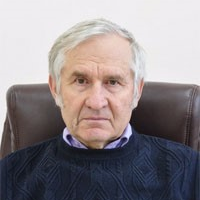Advances in Surface Modification of Metals and Alloys
A special issue of Crystals (ISSN 2073-4352). This special issue belongs to the section "Crystalline Metals and Alloys".
Deadline for manuscript submissions: closed (20 December 2023) | Viewed by 4646
Special Issue Editors
2. National Research Tomsk Polytechnic University, Tomsk 634050, Russia
Interests: fatigue of metals and metal foils; plastic deformation and fracture of solids; surface modification; positron annihilation in solids
Interests: electron beams; electron; ion and plasma sources; electron-ion-plasma modification of material surface; physics of high-current electron beam; physics of plasma; physics of vacuum discharges; plasma emission electronics; generation of low-temperature plasma; film and coating deposition; PVD-methods; nitriding
Special Issues, Collections and Topics in MDPI journals
Special Issue Information
Dear Colleagues,
The modification of the surface of metals and alloys is one of the most effective ways to change the mechanical and functional properties of manufactured materials, and to restore worn out equipment or individual parts, increasing their reliability and durability without changing the bulk properties of the material. The modification of surface layers with a thickness ranging from fractions of a millimetre to several millimetres provides high economic efficiency, and reduces the cost of equipment due to the application of ordinary structural materials instead of expensive, high-quality constructional materials.
In recent decades, much attention has been paid to the development of surface modification methods, such as ion implantation, surface treatment with high-current electron and ion beams, plasma spraying, cold spraying, laser melting, friction stir processing technology, electron beam and electrode–arc surfacing, leading to the formation of gradient structures in metals and alloys. In the process of surface modification, a change in the chemical composition, grain and secondary phase’s refinement, the formation of metastable phases, and the development of the defect structure of crystals up to amorphization, etc., lead to a change in the surface properties. Some of the surface properties that can be modified by this process are hardness, toughness, adhesion, wear resistance, friction, corrosion oxidation, fatigue life, and sliding resistance, etc.
Taking into account the progress in the development of these areas over the years, both in scientific and applied terms, we invite researchers and scientists to contribute to the Special Issue "Advances in Surface Modification of Metals and Alloys". The aim is to create a forum that highlights the latest achievements in the development of surface modification methods, with an emphasis on changing the composition, structure and properties of surface layers, with a fairly clear presentation of the basic principles of the modification methods, but without discussing subtle technical details.
Dr. Pavel Kuznetsov
Prof. Dr. Nikolay Koval
Guest Editors
Manuscript Submission Information
Manuscripts should be submitted online at www.mdpi.com by registering and logging in to this website. Once you are registered, click here to go to the submission form. Manuscripts can be submitted until the deadline. All submissions that pass pre-check are peer-reviewed. Accepted papers will be published continuously in the journal (as soon as accepted) and will be listed together on the special issue website. Research articles, review articles as well as short communications are invited. For planned papers, a title and short abstract (about 100 words) can be sent to the Editorial Office for announcement on this website.
Submitted manuscripts should not have been published previously, nor be under consideration for publication elsewhere (except conference proceedings papers). All manuscripts are thoroughly refereed through a single-blind peer-review process. A guide for authors and other relevant information for submission of manuscripts is available on the Instructions for Authors page. Crystals is an international peer-reviewed open access monthly journal published by MDPI.
Please visit the Instructions for Authors page before submitting a manuscript. The Article Processing Charge (APC) for publication in this open access journal is 2600 CHF (Swiss Francs). Submitted papers should be well formatted and use good English. Authors may use MDPI's English editing service prior to publication or during author revisions.
Keywords
- surface modification
- plasma and cold spraying
- laser melting
- ion implantation
- electrode–arc surfacing
- friction stir treatment
- gradient structure and properties






